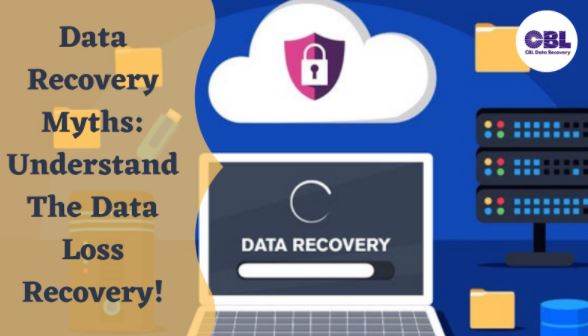Very often there are situations in which the user loses important data. It is impossible to restore them without the appropriate software. There are many data recovery software, but each is designed for a specific situation.
Laptop data recovery is one of the most mysterious and mythical sides of the IT industry. This is due both to the fact that most of the methods and techniques for data recovery are hidden from the majority of users. And there is still no place where one could get the right guide in “data recovery”.
In this guide, we will mention some of the data recovery myths.
So, let’s have a look at the following!
Data Recovery Myths
Recovering Data From Flash Drives is Easier Than Hard Drives
Flash drives and any storage devices have a limited service life associated with a finite number of data records in a memory cell. If you use the sectors in the same way as a hard disk is used, the most frequently used memory cells will inevitably wear out much faster. In order to avoid premature wear and tear, manufacturers of flash devices use various mechanisms for redistributing data. The data in the flash drive and any other devices are usually distributed more or less evenly over the largest array of memory cells. And as they wear out they move to other cells.
Recovering data from such devices is to determine by what algorithm the data is distributed within the cells, how the memory cells are organized into sectors, those into pages, and pages into blocks and blocks into memory banks.
After the algorithm is determined, the data is reassembled to obtain a device image suitable for data extraction. In addition, error correction mechanisms are implemented to correct errors that constantly arise due to data transfer processes, which must also be taken into account when recovering data. In any memory chip, there are areas of bad cells, which should be excluded from the analysis when recovering data. All this together makes data recovery from flash devices much more time-consuming than a conventional hard drive recovery.
Solid State Drives are Much More Reliable Than Hard Drives
Unlike hard drives, SSDs don’t have moving parts (spindle motors, magnetic platters, and magnetic head assemblies). The problem with solid-state drives is the finite resource of a memory cell that cannot be overwritten. The other side of this coin is the complexity associated with recovering data from solid-state drives. The encryption of the data of many modern SSDs is a bonus. Even if a data recovery technician manages to subtract the NAND chips and assemble the correct image, it will face a blank wall of strong encryption.
Data Recovery is Always Very Expensive
In fact, most situations when a user loses access to their data lie in the plane of different types of logical problems like – formatting, partition re-partitioning, deleting files and directories, encryption. Physical failures of drives are only the second most common cause of loss of access to data, and physical failures are different. If you need to replace the heads or transfer the magnetic plates to another HDA, the price will be quite high. But if the disk has problems with the firmware or the electronics board, the price is lower.
Any Sysadmin Can Recover Data
System administrators are a kind of caste of IT professionals who are often credited with functions that they are not really trained in. The main function of a system administrator is maintaining the functional condition of the system as well as solving problems related to software and operating systems. Data recovery requires special equipment. Of course, many of them, due to their good knowledge of software and the principles of operation of operating systems can recover data in the simplest cases.
Can’t Lose Data in the Cloud
Of course, cloud services are very reliable stores of information. But there is still a chance of losing data in the cloud. First of all, this is due to the possibility of losing control over your cloud storage account. But it doesn’t matter if you lost a pair of login-passwords, or a third-party hacked your account. The second probability is late payment for storage if you use its paid version. For some time, if the payment is overdue, your place will be destroyed. Finally, from time to time, disasters occur in the data centres of cloud service providers, which leads to temporary problems with access to data.
If the Disc Knocks, You Need to Change the Heads
Indeed, if your disk rattles, this usually means a failure of the magnetic head unit or the preamplifier-commutator microcircuit. However, this is not always the case. In some cases, the disk can knock in the event of firmware errors like –
- If a defect from a nonexistent disk area is added to lists of the drive and the drive from time to time tries to “take away” the heads.
- “Cyclic” overlay errors when the disk repeatedly restarts the start process.
- Failure of recalibration while the disk inaugurates the start process again;
- Surface defects, on which there is a “breakdown” of the reading and the heads produce emergency parking; etc.
Therefore, you need to hire the services of professionals to change the head.
Wrapping Up!
It’s advisable to get rid of all the misconception of laptop and server data recovery. There are a number of organizations that establish the hallmark of trust and integrity in the data recovery industry. These companies are highly professionals in delivering premium quality services across the globe. The experts of these companies have the capacity to provide a 100% data recovery guarantee.
